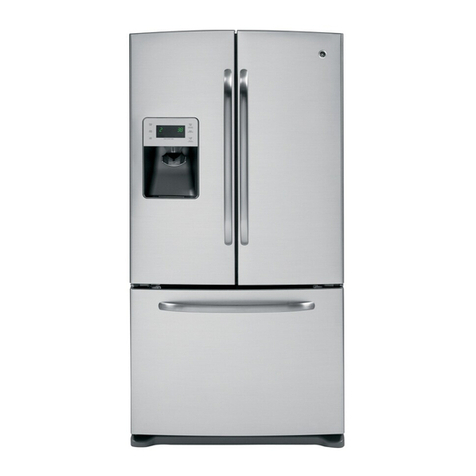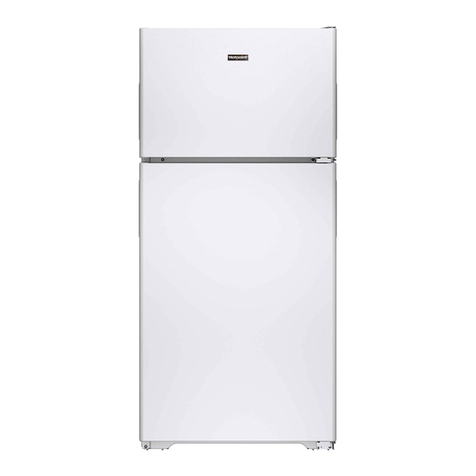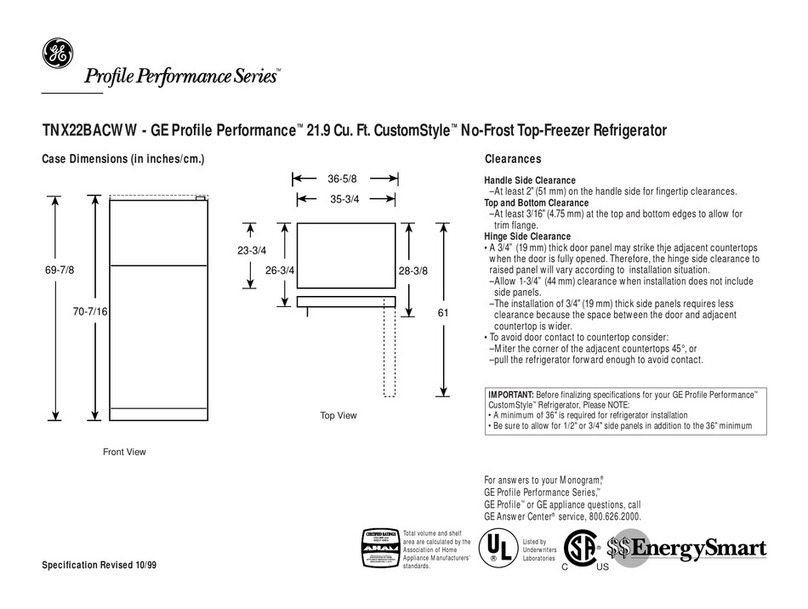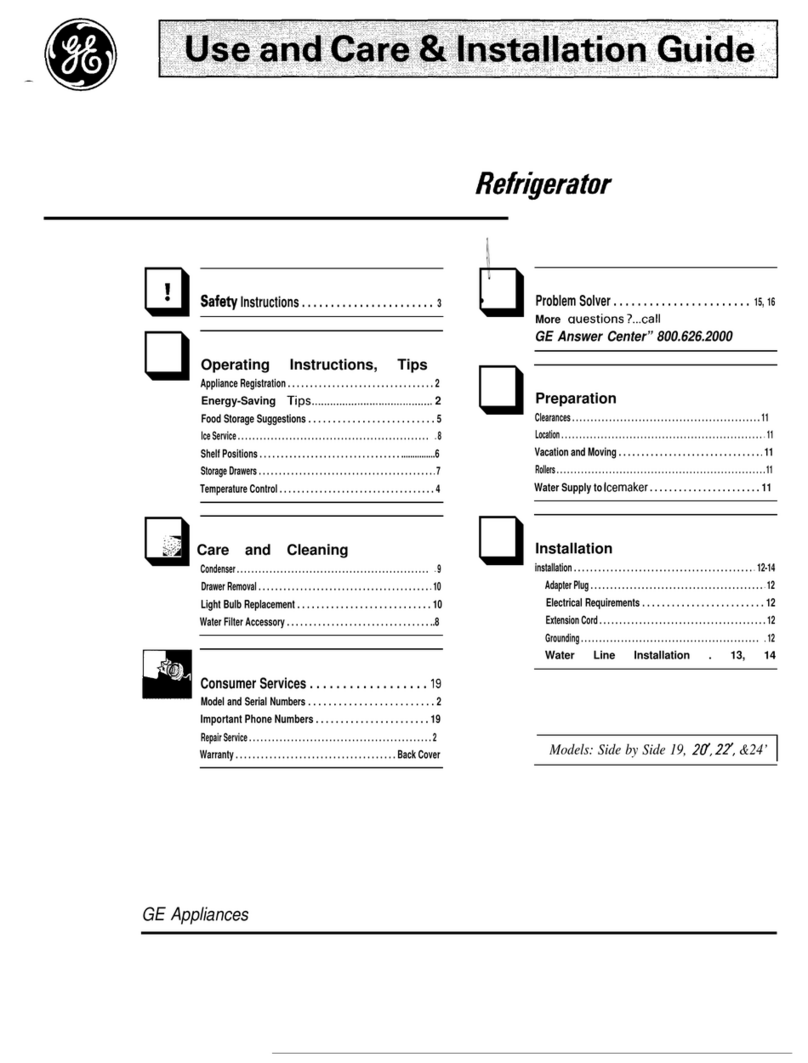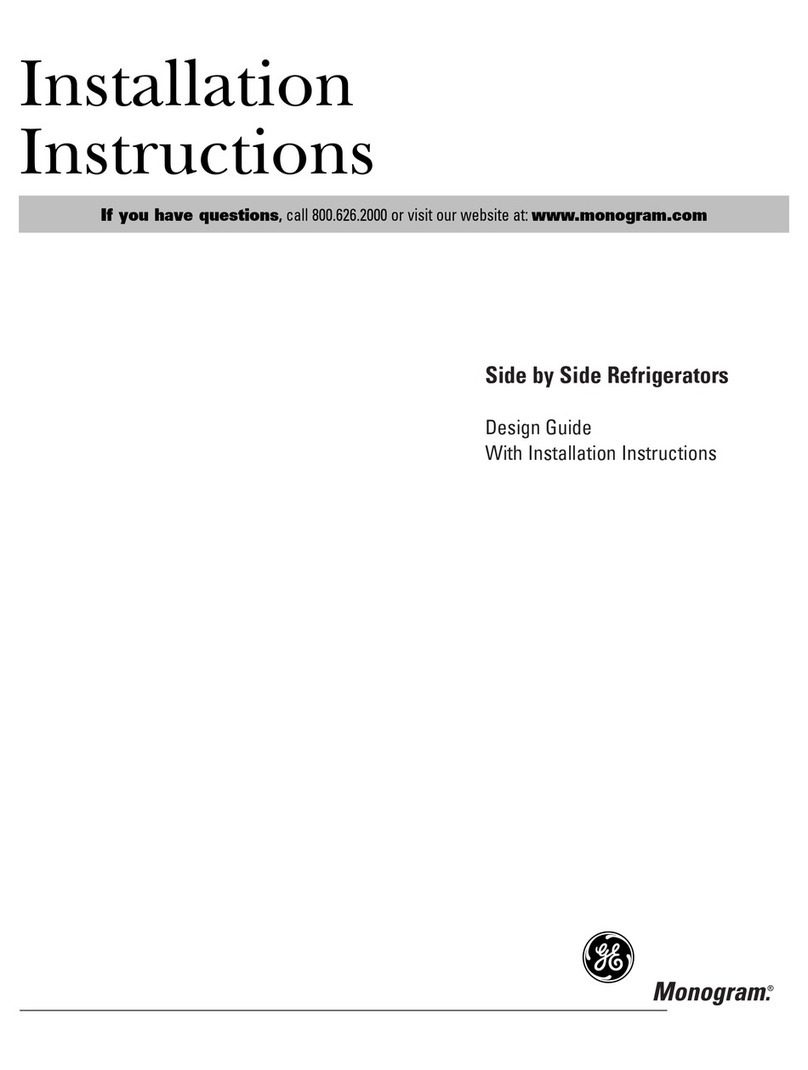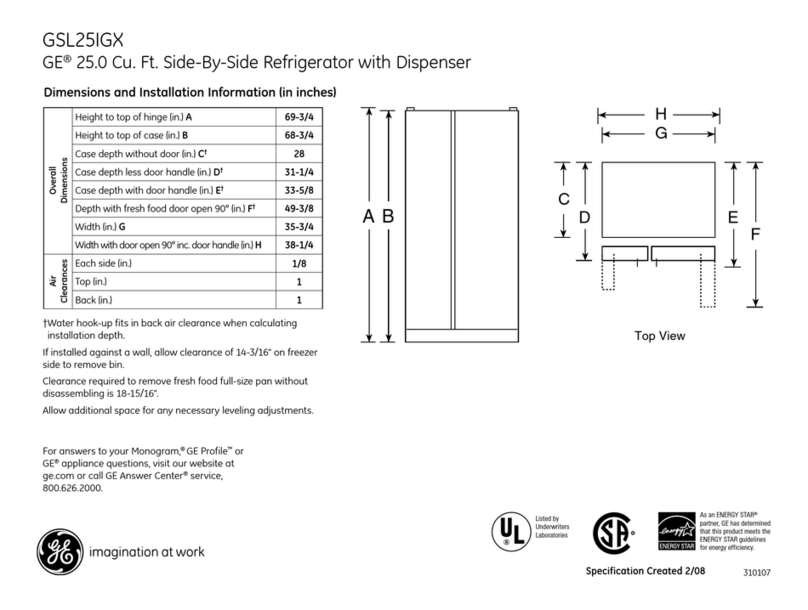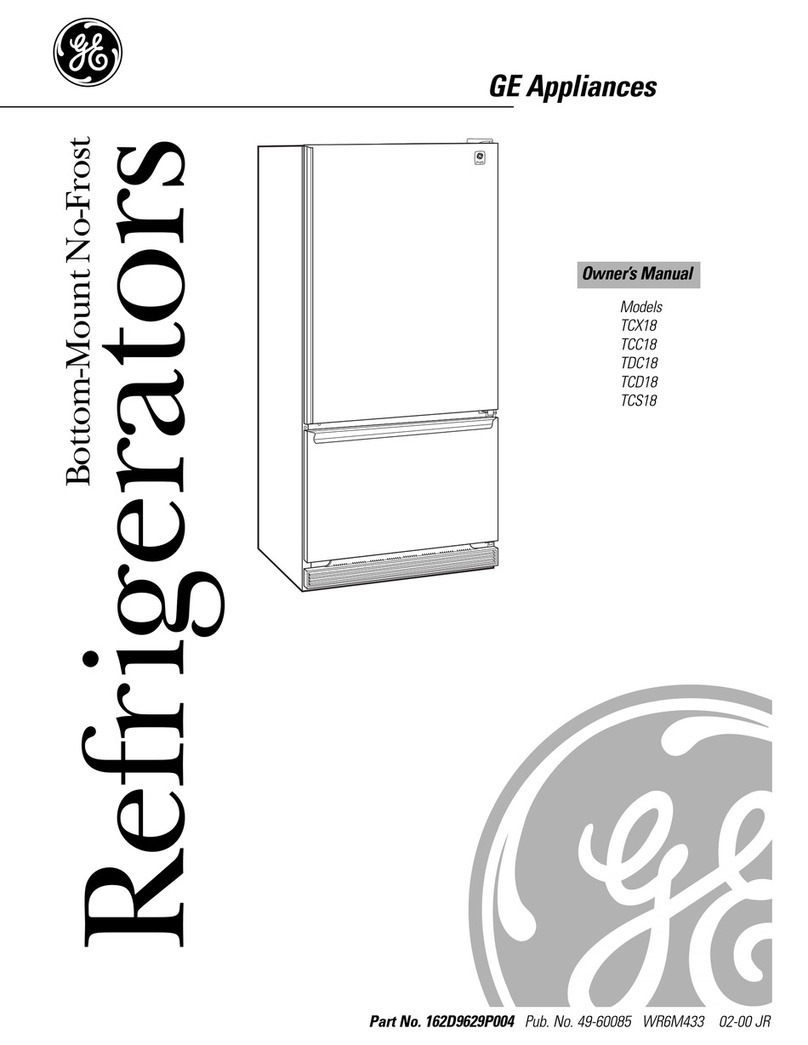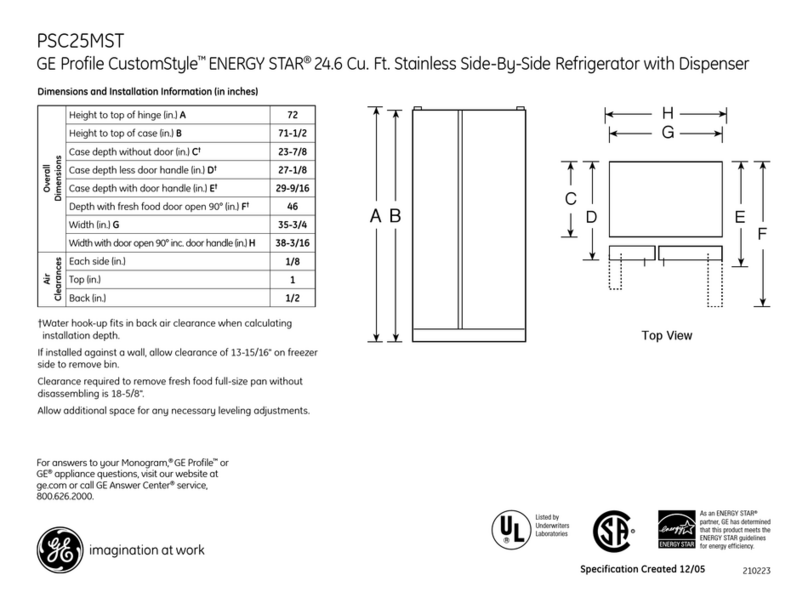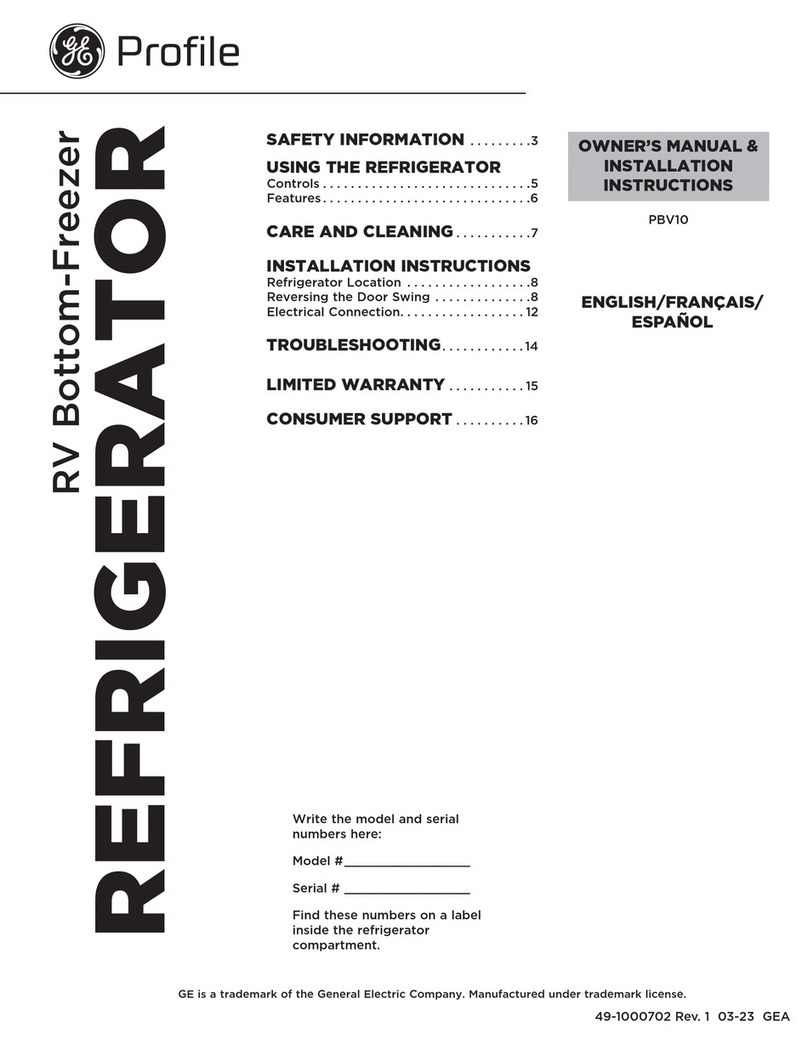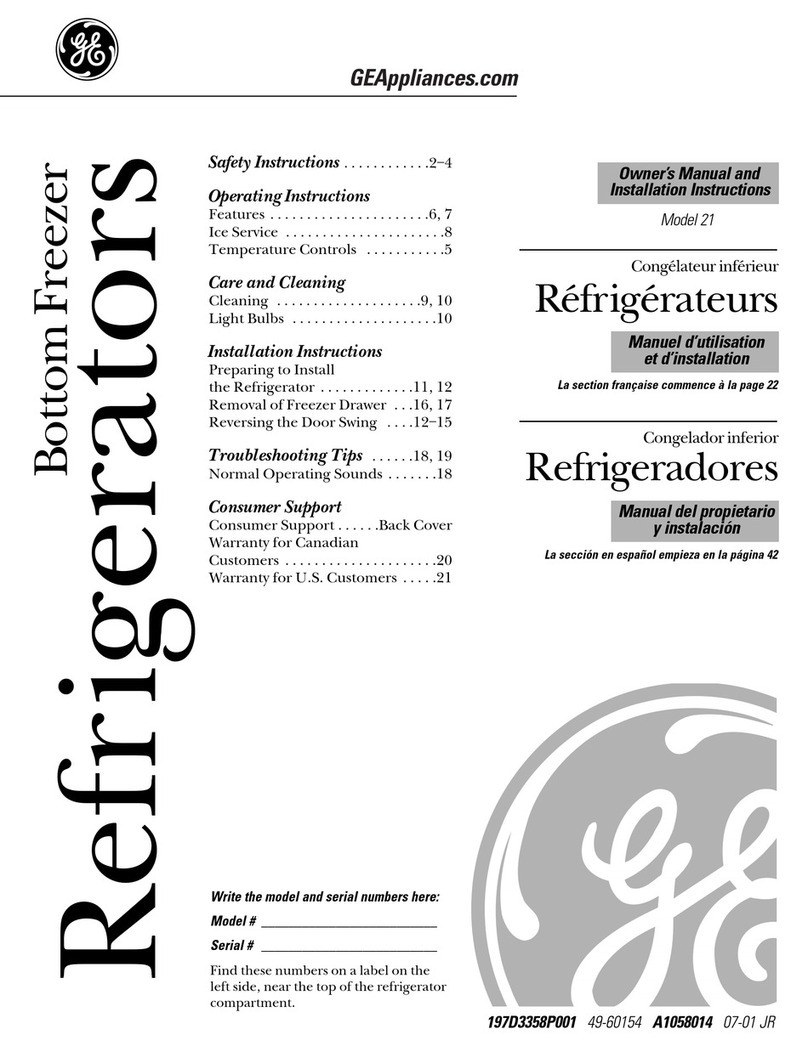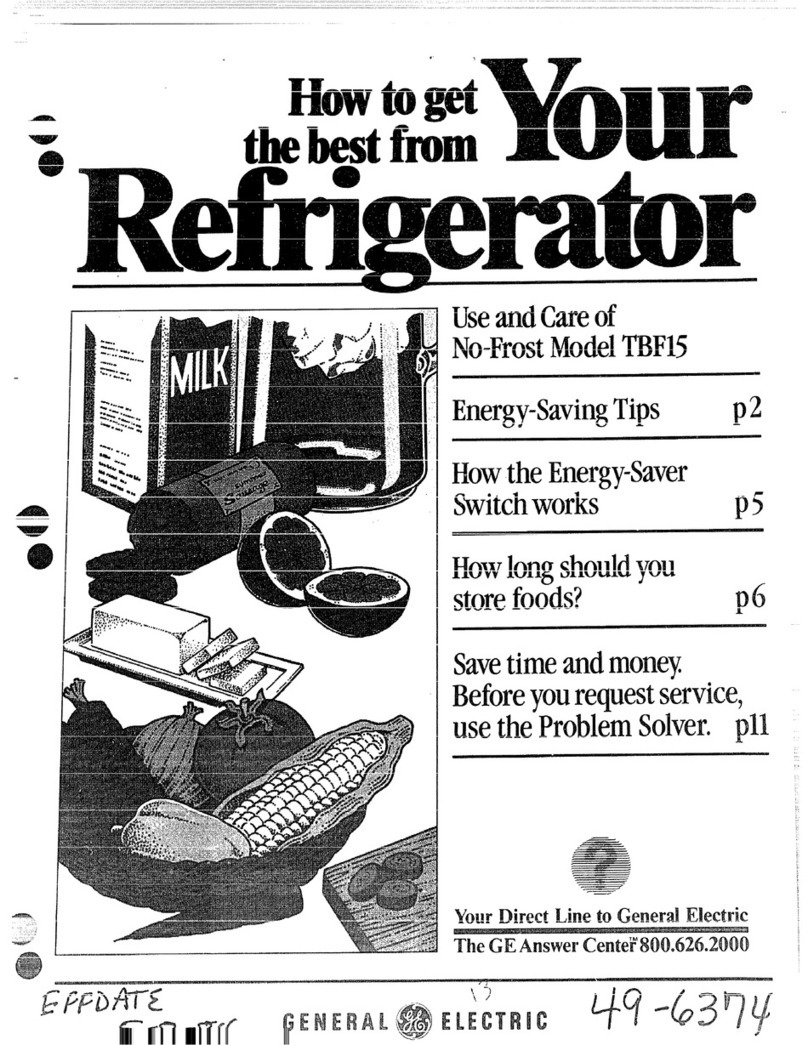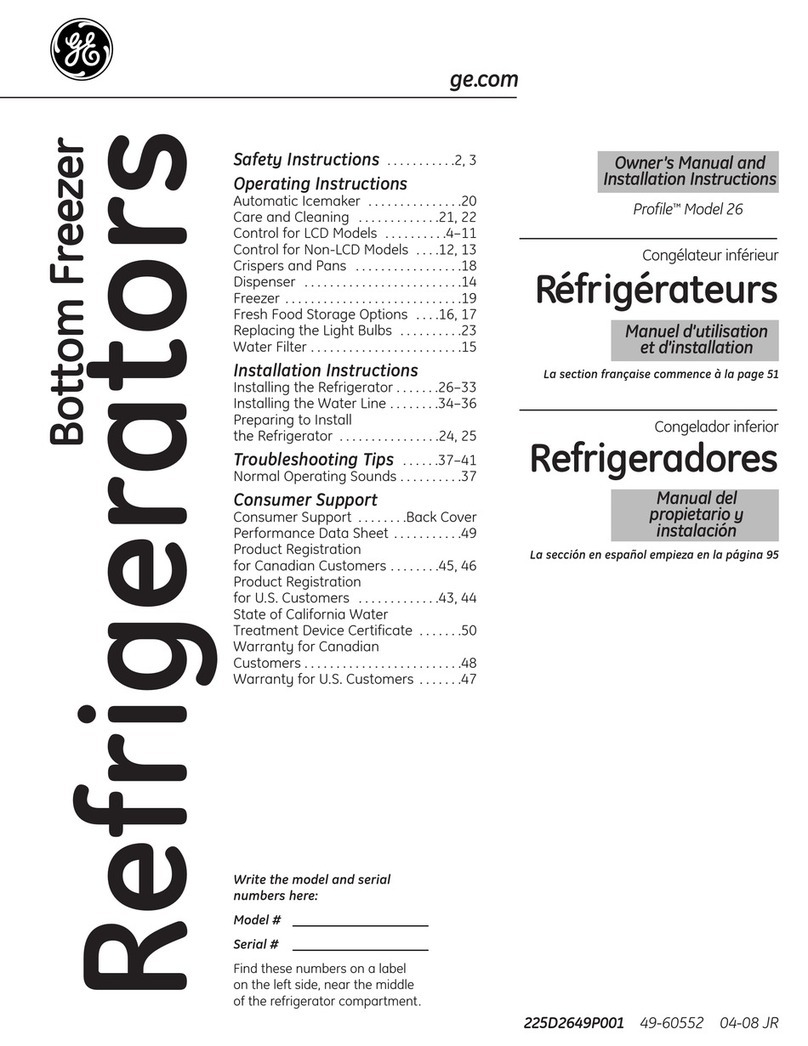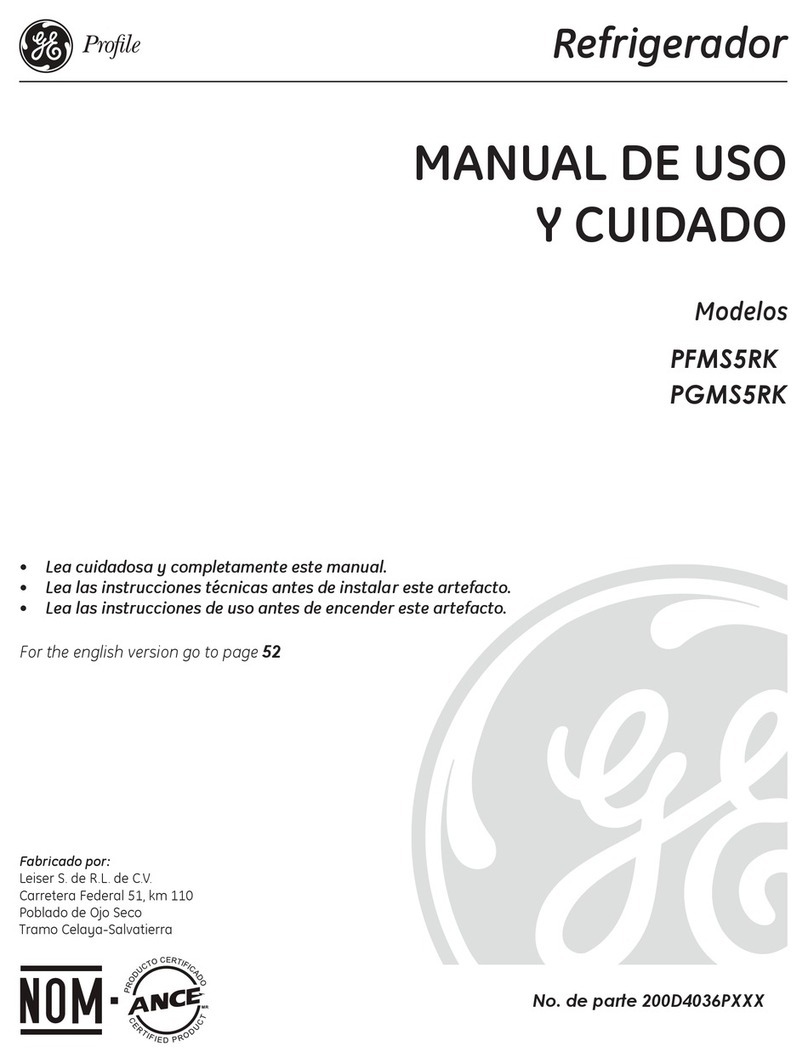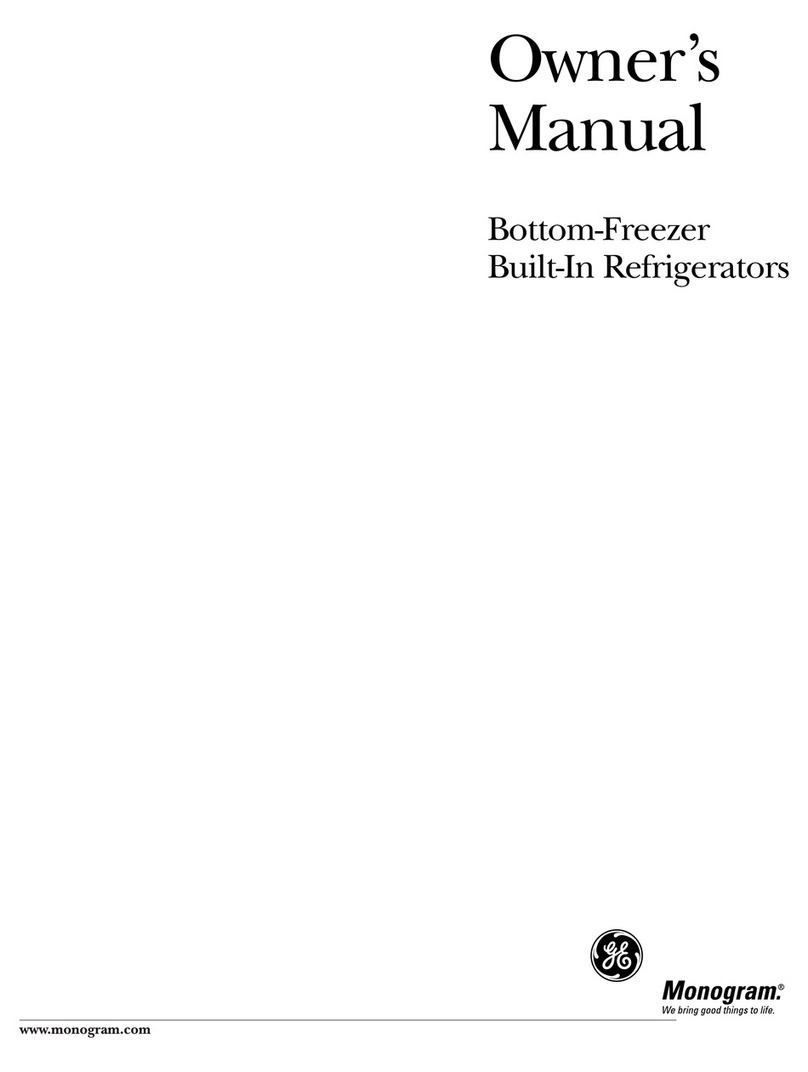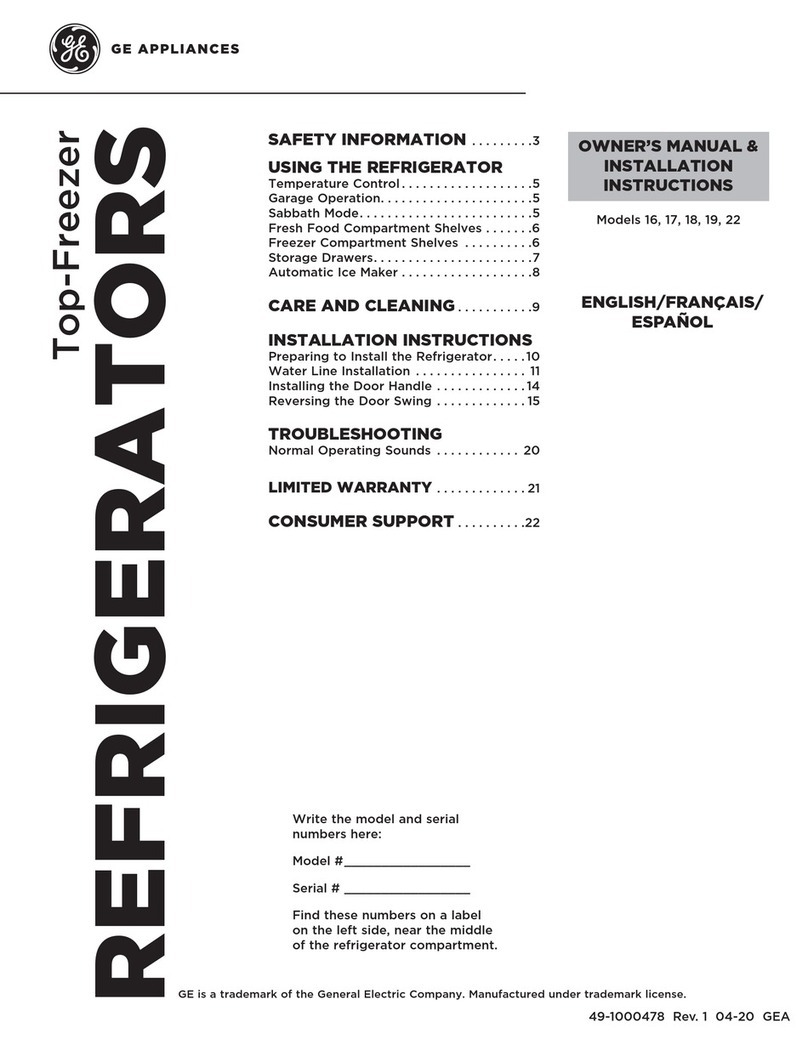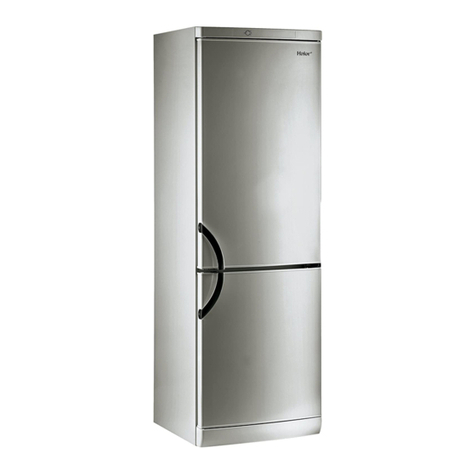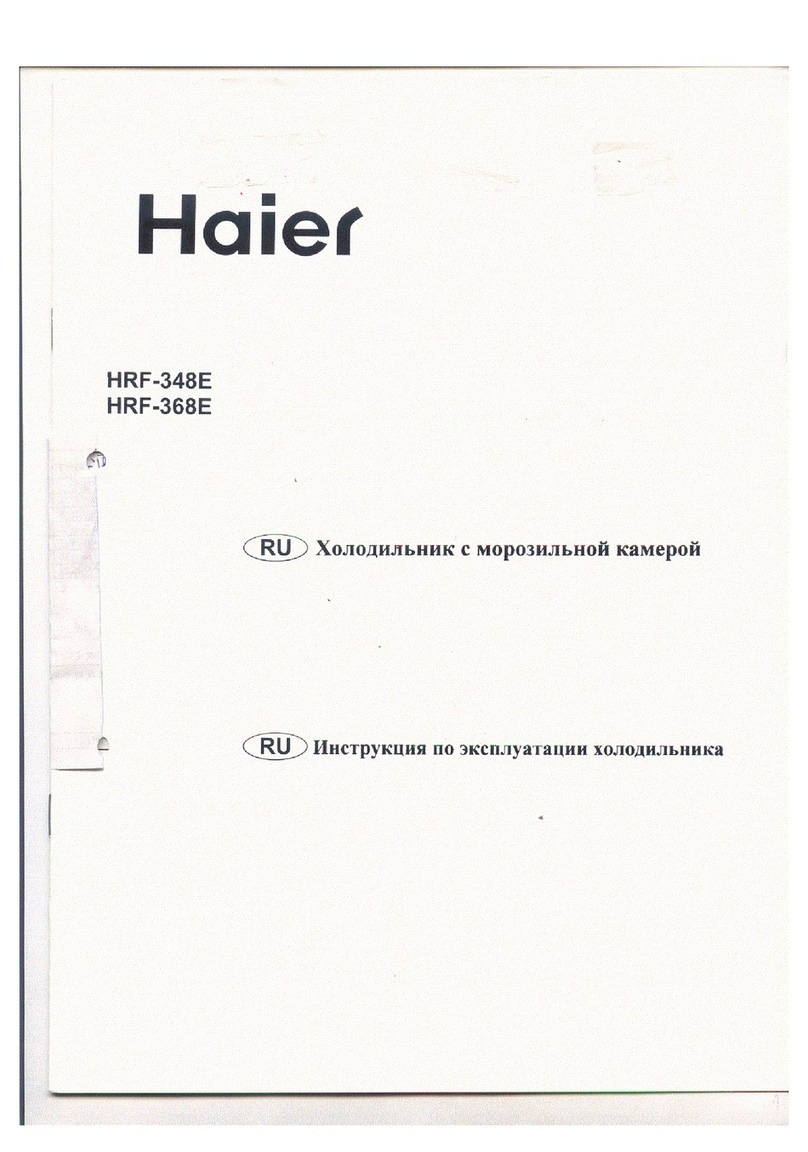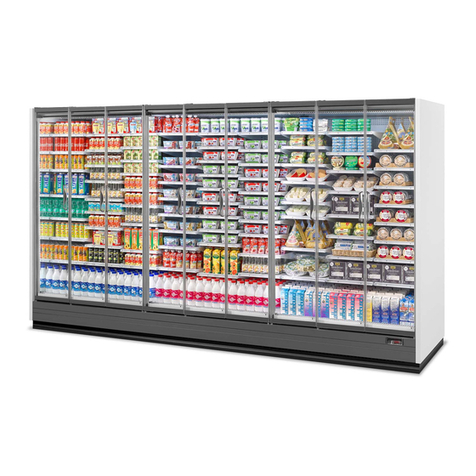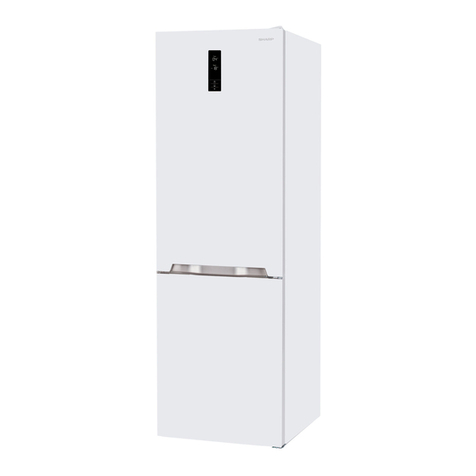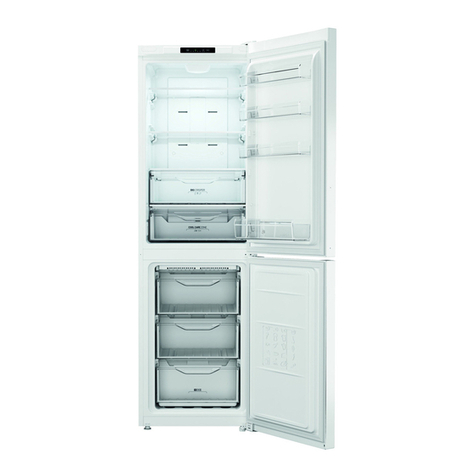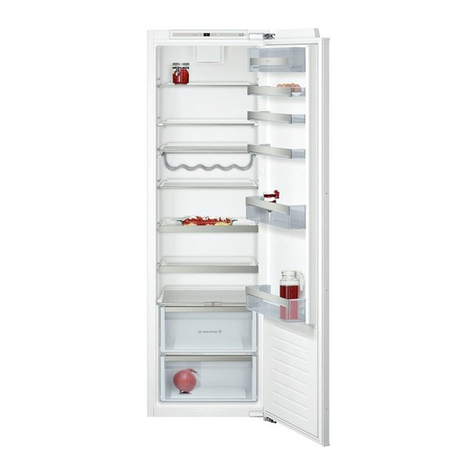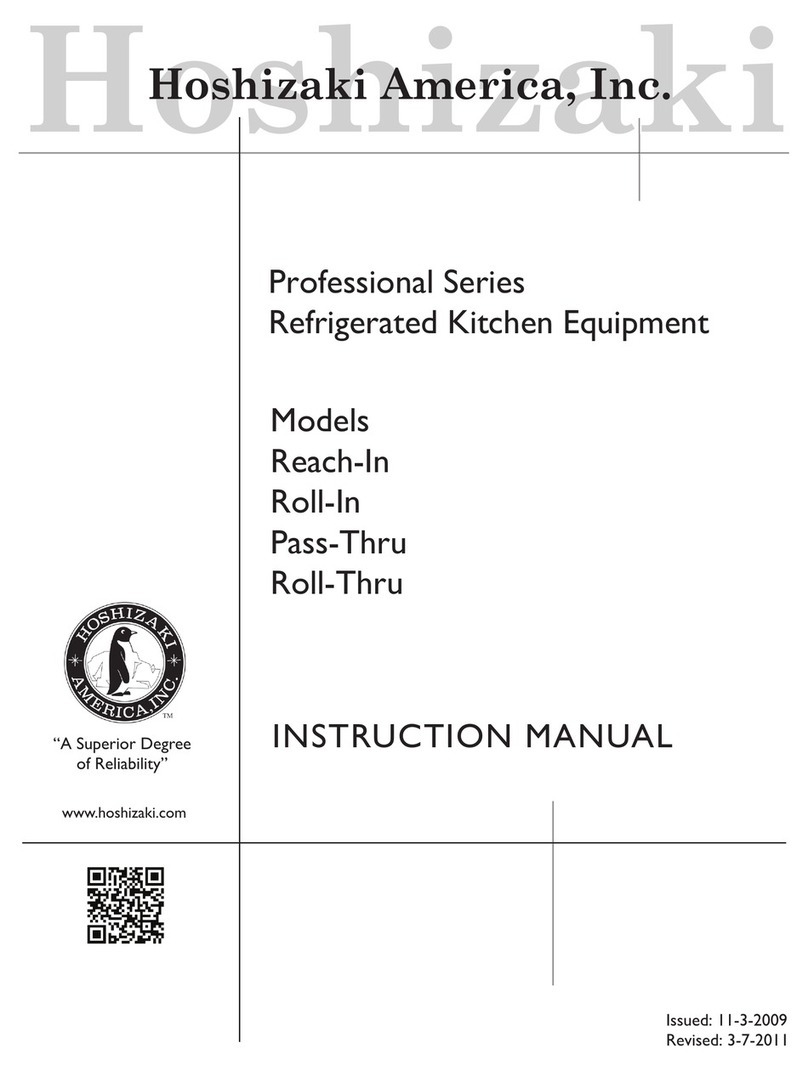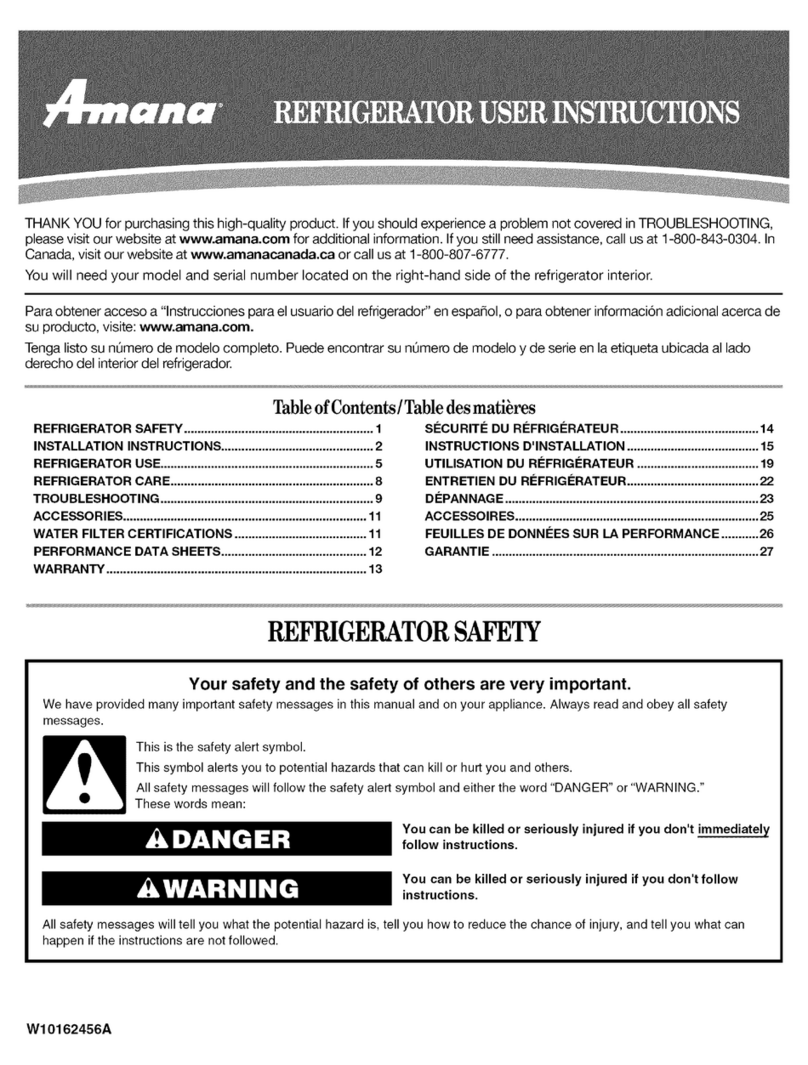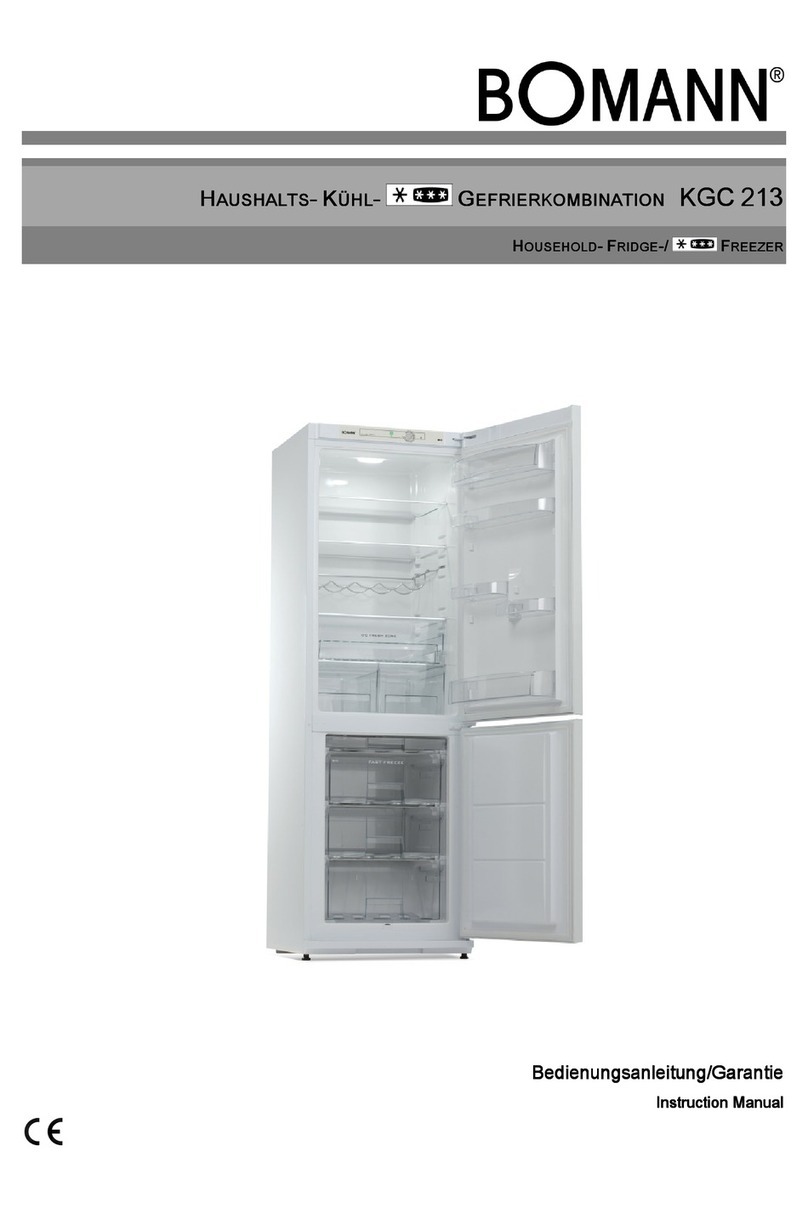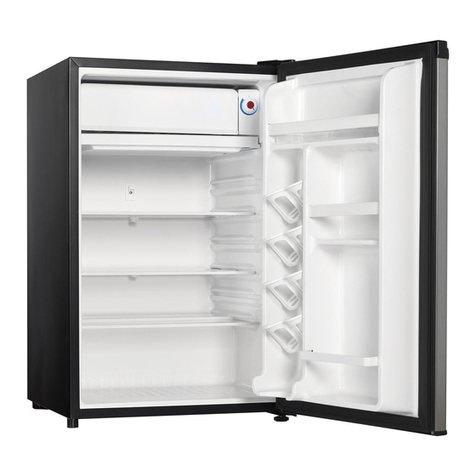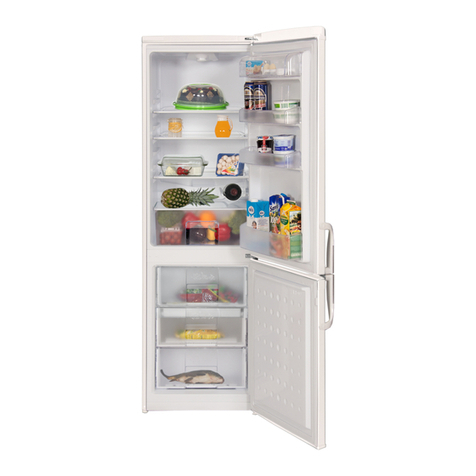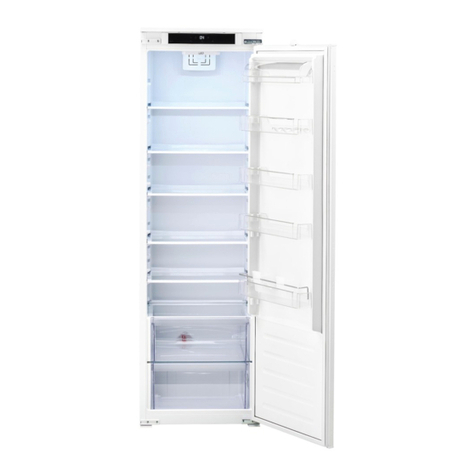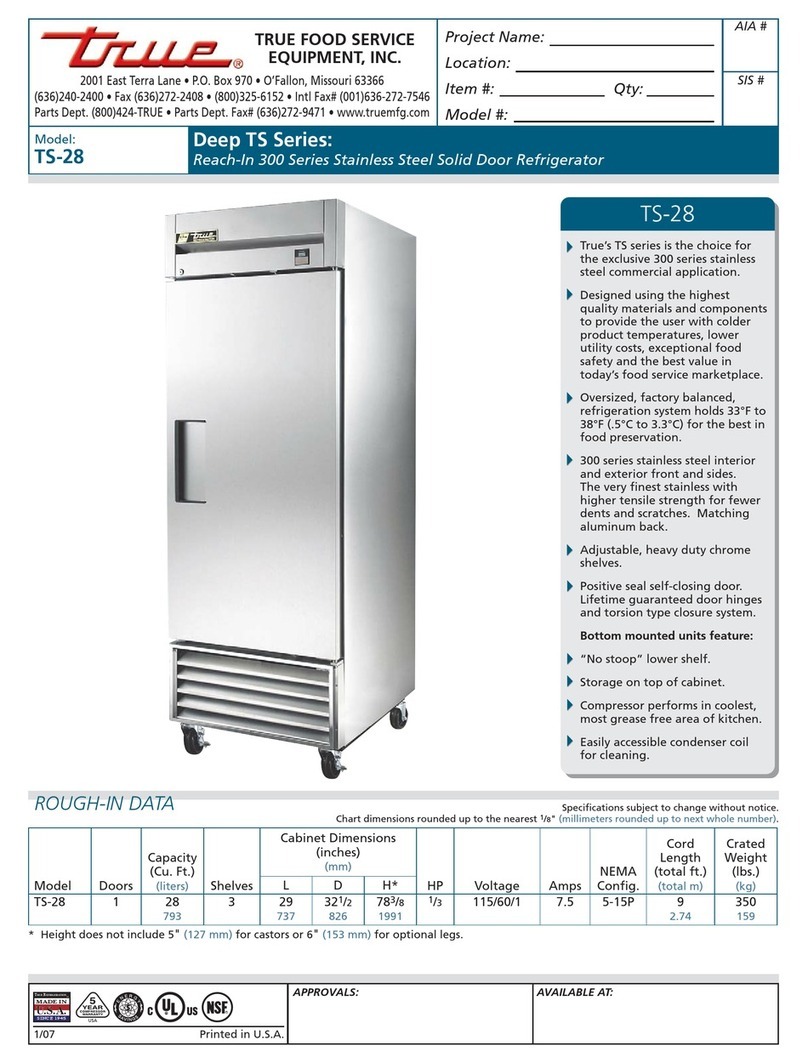Ifyou shutoff the house power for extended
vacations, remove food and clean interior
with baking soda solution using one table-
spoon of baking soda per each quart of
water. Wipe dry. To prevent formation of
odor, place open box of soda in refrigerator
and leave doors open.
If you leave for shorter absences, remove
perishable foods and leave control dial at
normal setting. if, however, room tempera-
ture is expected to go below 60°F~, turn
control dial to OFF, remove food, defrost,
clean interior, leave door open and remove
plug from wall receptacle.
Move red ON-OFF lever down to OFF
position and shut off water supply to ice-
maker. Icemaker manual ON-OFF switch
is located near front of icemaker.
Disconnect power cord from wall recepta-
cle. Remove all foods and clean interior,
Such loose items as grille, shelves, storage
pans, ice storage bucket, covers and remov-
able parts should be protected or secured
with tape. This prevents their coming loose
and causing damage.
Your refrigerator is on wheels, so be sure it
is properly secured in moving van to pre-
vent rolling and damage.
Handle with care; exterior should be pro-
tected with blanket covering.
Complaint Handling
wmaintain aStiitfof Customer Rela-
tionsManagers at major market locations
to whom you may oppeal for service help
ifyoume notsotisfied with the assistance
received through the normai channels
specified in the Wiirriinty on the back
cover under “H(JwTc)Ohtain .!krvice.”A
listingof locations i.tndwlcphone numbers
is providt:d with the product. We also
maintain uworking rcltitionship with
MACAP, [he Major Applitincc Consumer
Action Panel, 20 North Wackcr Drive,
Chicago, Illinois 60606, so thut you mtiy
contact them for help in resolving accml-
plaint but only after you have tried (o
resolve the problem through our Cus-
tomer RelationsOffices.
:1111$111111!?llllllll!11111!1$1:11111111119111111111111$1!1111111!11118111$111111:
YOUR OWN SELF-SERVICEICHECKIBEFORECALLINGFORGE SERVICE
Automatic icemaker does not work
@Red ON-OFFlever in OFF position
@Water SUpplyturned off or not
connected
@Freezer compartment too warm
@cubes too small—shut-off valve
connecting refrigerator to home
water line may be c~ogged.
Cube dispenser does not work
@No ice cubes: icemaker turned off or
water supply turned off
63No ice cubes: remove storage con-
tainer—if cubes are frozen to
wire arm, remove cubes
@Irregular ice clumps in storage
container, remove container, rotate
auger, discard clumps per instructions
Slow ice cube freezing
eFreezer door may have been left ajar,
eTurn temperature of freezer section
colder. Set [he temperature control
on (he left to “D” and the other
control to “8” for colder freezer
temperatures.
Ice cubes hwe odor/taste
@Old cubes need to be discarded.
@Cube bucket needs to be emptied
and washed.
eUnsealed packages in refrigerator
and/or freezer may be transmitting
odor/taste to ice cubes.
Refrigerator does unotrun
QMay be in defrost cycle when motor
does not run for 30 minutes.
Temperature control in OFF position.
If interior light is not on, refrig-
erator may not be plugged in at wall
receptacle.
If plug is secure and the refrigerator
stiil f{ils to operate, plug alamp or
asmall appliance into the same outlet
to determine if there is atripped
circuit breaker or burned out fuse.
Motor runsfor long periods
Modern refrigerators with more stor-
age space and alarger freezer scc[ion
require more running time.
Normal when refrigerator is first
delivered to your home– usually
requires 24 hours to completely
cool down.
Large amounts of food placed in
refrigerator to be cooled or frozen.
Hot weather– frequent door openings
to get ice or cold drinks.
Door left open.
Temperature controls set too cold.
Refer to instructions for use of
TEMPERATURE CONTROLS else-
where in this book.
Grille and condenser need cleaning.
Refer to CONDENSER elsewhere in
this book.
Check ENERGY-SAVING TIPS else-
where in this book.
Hot air from bottom of refrigerator
eNormal air flow cooling motor.
In the refrigeration process, it
is normal that heat be expelled in
area under refrigerate}: Some syn-
thetic floor coverings which are
relatively new on the market will
discolor at”these normal and safe
operating temperatures. Your floor
covering supplier should be consulted
if you object to this discoloration.
Motor starts &stops frequently
@Temperature control starts and stops
motor to maintain even temperatures.
Operatingsounds
The high speed motor compressor
required to maintain near zero
temperatures in the large freezer
section can produce higher sound
levels than your old refrigerator.
Normal fan air flow– one fart blows
cold air through the refrigerator and
freezer sections-another fan cools
the motor compressor.
These NORMAL. sounds will also be
heard from time to time:
Defrost timer switch clicks at defrost.
Defrost water dripping into drain pan.
Temperature control clicks ON or OFF.
Refrigerant boiling or gurgling.
Cracking or popping of cooling coi!s
caused by expansion and contraction
during defrost and refrigeration
following defrost. o
“+1
$~;~
.1--,-’
With automatic icemaker, the sound
of cubes dropping into the bucket
and water running in pipes as
icemaker refills.
